In the ever-evolving landscape of dental education, the integration of technology has become essential to improve learning outcomes and student satisfaction. Among these advancements, the use of electronic rubrics (e-rubrics) in the evaluation of practical assignments stands out as a valuable tool. E-rubrics serve as structured assessment tools that define clear criteria for performance across various learning tasks, providing insightful feedback mechanisms for students. This structure is crucial in the intricate field of dentistry, where both theoretical knowledge and practical skills must be simultaneously cultivated. E-rubrics provide a structured, transparent, and efficient means of assessment that benefits both students and educators. The potential benefits of utilizing e-rubrics in dental education include enhanced clarity of expectations, improved self-assessment capabilities, and ultimately, elevated learning satisfaction among students.
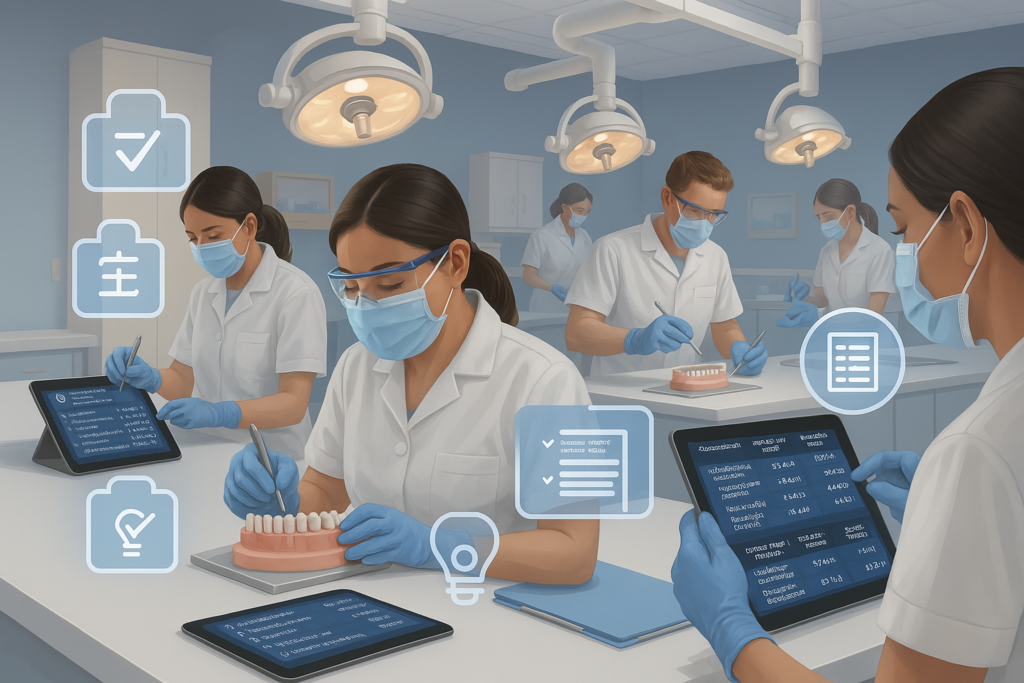
At Near East University Faculty of Dentistry, we have been utilizing e-rubrics as a key evaluation tool for over two years, significantly enhancing our approach to assessing practical assignments. This innovative system has allowed us to provide structured and detailed feedback, ensuring that students clearly understand the evaluation criteria and their performance. By adopting e-rubrics, we have achieved greater consistency and transparency in grading, fostering trust and motivation among our students.
Enhancing Learning Through Structured Feedback
Dentistry is a highly skill-based profession that demands precision, critical thinking, and a mastery of practical techniques. E-rubrics, designed with clear criteria and performance levels, offer a systematic way to evaluate these skills. By breaking down complex tasks into specific components, students can better understand the expectations and areas where they excel or need improvement. For instance, in a task like tooth preparation or impression taking, an e-rubric can assess dimensions such as accuracy, technique, and procedural steps
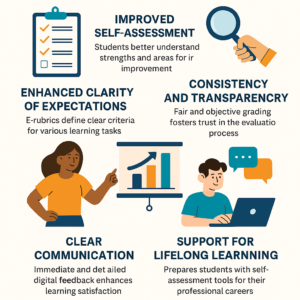
This structured feedback allows students to pinpoint their weaknesses and strengths, fostering self-directed learning. Moreover, it aligns with the principles of formative assessment, which emphasize ongoing feedback to promote learning during the educational process. When students receive clear and actionable guidance, they are more likely to refine their skills and achieve competency in clinical practices.
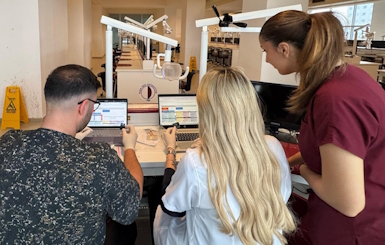
One of the critical challenges in dental education is ensuring fairness and consistency in assessments, especially in practical tasks where subjectivity can sometimes influence grading. E-rubrics mitigate this issue by providing standardized evaluation criteria. Regardless of the evaluator, whether an experienced professor or a junior faculty member, the assessment remains consistent, reducing bias.
“Clarity in expectations fosters student motivation.”
For students, this transparency builds trust in the evaluation process. They gain confidence that their grades reflect their performance rather than subjective opinions. In turn, this enhances their motivation to improve, knowing that their efforts are objectively recognized.
Improving Satisfaction Through Efficient Communication
Student satisfaction is a crucial metric in higher education, as it influences engagement, performance, and overall well-being. E-rubrics contribute significantly to satisfaction by facilitating clear communication between educators and students. The digital format allows for detailed comments and explanations, which can be accessed and reviewed at the student’s convenience.
“Real-time digital feedback makes learning both dynamic and measurable.”
Additionally, the immediate availability of e-rubric results reduces anxiety associated with delayed feedback. For example, after a practical course or clinical session, students can quickly access their performance evaluations, enabling them to address deficiencies promptly. This immediacy fosters a positive learning experience and helps maintain momentum in skill development.
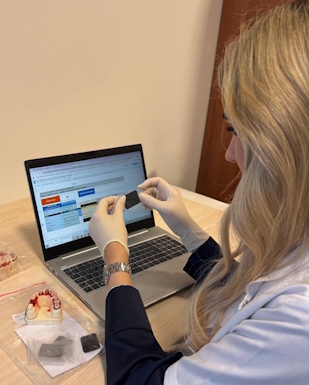
While the primary focus of e-rubrics is on students, educators also benefit significantly from their use. Traditional methods of assessment, often paper-based, are time-consuming and prone to errors. E-rubrics streamline the evaluation process by enabling digital input, automated calculations, and efficient storage of results.
This efficiency allows educators to dedicate more time to mentoring and providing personalized feedback, further enriching the educational experience. Furthermore, the use of e-rubrics facilitates data collection and analysis, enabling educators to identify trends, track student progress, and adjust teaching strategies accordingly.
Promoting Lifelong Learning and Professional Growth
The value of e-rubrics extends beyond the classroom, as they prepare students for lifelong learning and professional practice. Dentistry is a field where practitioners must continually assess and refine their skills. The familiarity with structured evaluation processes instilled by e-rubrics equips students with the mindset and tools to self-assess effectively in their professional careers.
Moreover, e-rubrics encourage critical reflection, an essential skill for professional growth. By analyzing their performance against predefined criteria, students develop a habit of evaluating their work objectively and seeking opportunities for improvement.
Student Perception: A Data-Informed Perspective
In addition to the institutional application of e-rubrics, a student survey conducted at the Near East University Faculty of Dentistry by Dilan Kırmızı, Özay Önöral, and Sevcan Kurtulmus-Yilmaz revealed overwhelmingly positive feedback. In response to the question, “How does the use of the e-rubric assessment tool influence the quality and effectiveness of your overall learning process?”, 81.2% of students stated that it made learning easier and more effective by guiding them and improving their overall experience (Figure 1).
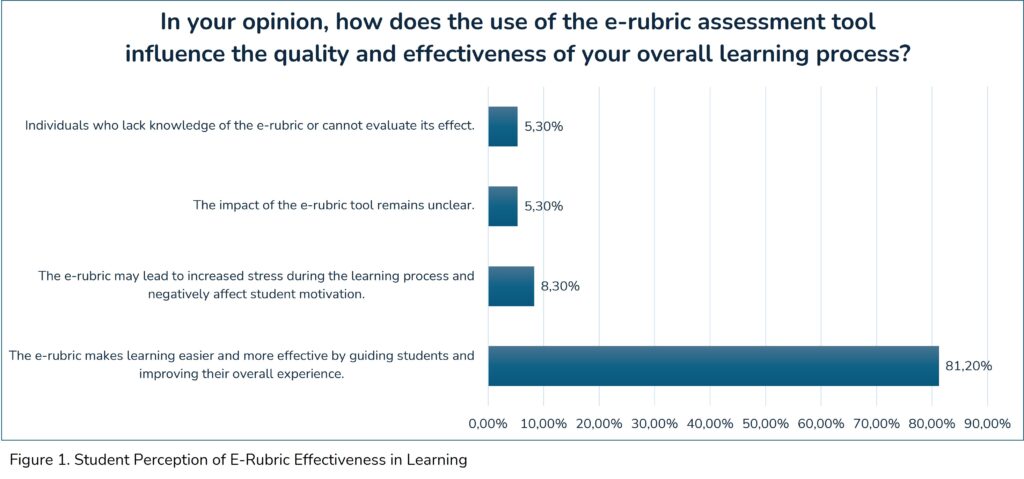
Another set of data showed that more than half of the respondents rated the e-rubric’s role in enhancing learning quality and achieving learning objectives. When combining “agree” and “strongly agree” responses, the results further support the positive reception of e-rubrics among students (Figure 2):
- 83% of students agreed that the e-rubric enhances the overall quality of their learning process.
- 85% stated that it plays an important role in helping them achieve their learning objectives.
- 82% indicated that the e-rubric makes the learning process easier compared to other practical courses.
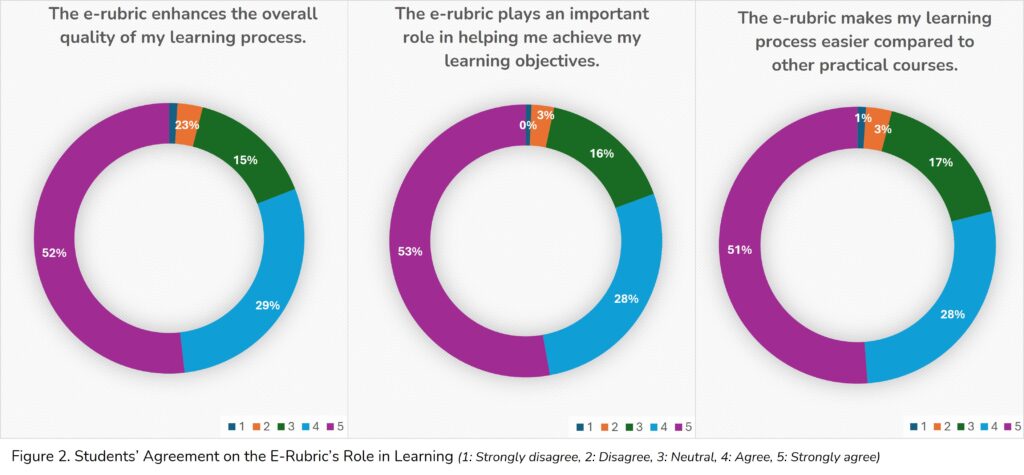
When asked about the key strengths of the e-rubric system (Figure 3):
- 30.4% highlighted its equitable and transparent scoring, emphasizing its comprehensive and objective assessment capacity.
- 28.5% pointed to the system’s role in identifying mistakes and contributing positively to development through timely and constructive feedback.
- Other notable benefits included the prevention of repeated errors and the visual representation of inaccuracies that aid learning.
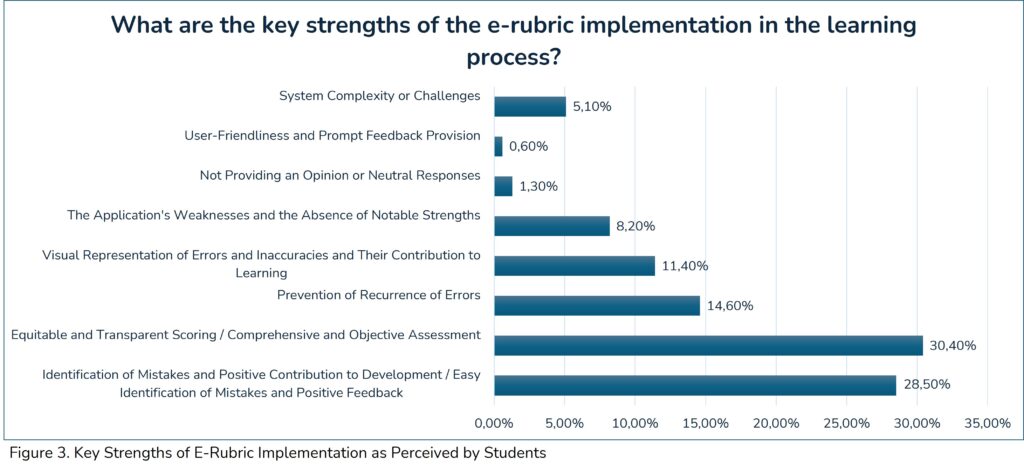
These findings strongly reinforce the value of e-rubrics as not only an assessment tool, but also a mechanism for improving engagement, transparency, and learning outcomes in dental education.
Conclusion
In conclusion, e-rubrics represent a transformative tool in dental education, particularly in practical assignments. Their ability to provide structured feedback, promote transparency, and enhance communication makes them invaluable for improving both the educational experience and satisfaction of dentistry students. By streamlining assessments and fostering a culture of self-reflection, e-rubrics not only prepare students for academic success but also equip them with the skills and mindset necessary for lifelong learning and professional excellence. As dental education continues to embrace technology, the integration of e-rubrics should be a priority to ensure that future dentists are well-prepared to meet the demands of their profession.